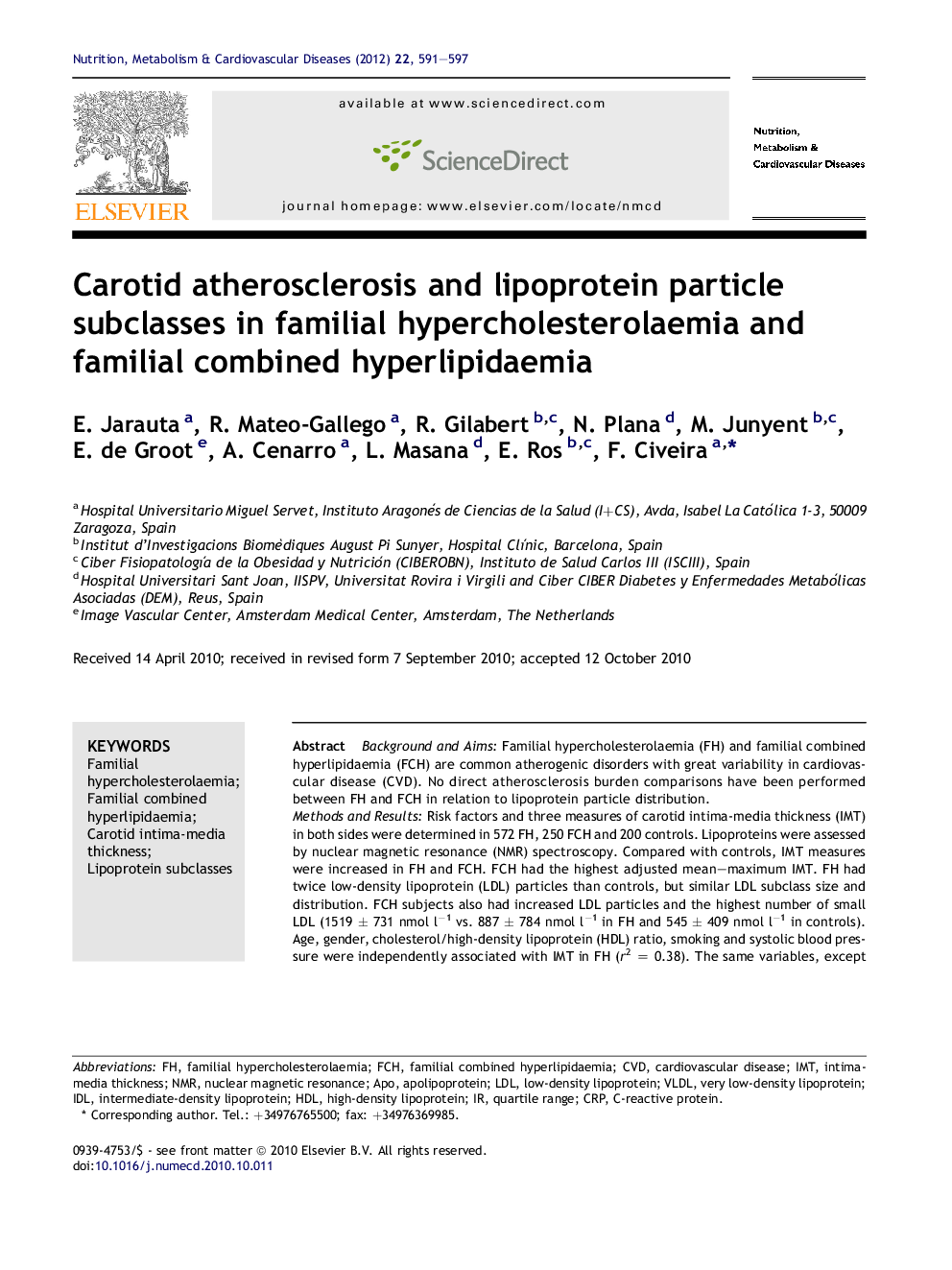| Article ID | Journal | Published Year | Pages | File Type |
|---|---|---|---|---|
| 3002167 | Nutrition, Metabolism and Cardiovascular Diseases | 2012 | 7 Pages |
Background and AimsFamilial hypercholesterolaemia (FH) and familial combined hyperlipidaemia (FCH) are common atherogenic disorders with great variability in cardiovascular disease (CVD). No direct atherosclerosis burden comparisons have been performed between FH and FCH in relation to lipoprotein particle distribution.Methods and ResultsRisk factors and three measures of carotid intima-media thickness (IMT) in both sides were determined in 572 FH, 250 FCH and 200 controls. Lipoproteins were assessed by nuclear magnetic resonance (NMR) spectroscopy. Compared with controls, IMT measures were increased in FH and FCH. FCH had the highest adjusted mean–maximum IMT. FH had twice low-density lipoprotein (LDL) particles than controls, but similar LDL subclass size and distribution. FCH subjects also had increased LDL particles and the highest number of small LDL (1519 ± 731 nmol l−1 vs. 887 ± 784 nmol l−1 in FH and 545 ± 409 nmol l−1 in controls). Age, gender, cholesterol/high-density lipoprotein (HDL) ratio, smoking and systolic blood pressure were independently associated with IMT in FH (r2 = 0.38). The same variables, except cholesterol/HDL ratio, were associated with IMT in FCH (r2 = 0.40). Among NMR lipoproteins, only VLDL and chylomicrons increased IMT prediction in FCH by 0.8%.ConclusionFH and FCH subjects show increased carotid atherosclerosis in relation to classical risk factors. Lipoprotein subclasses do not substantially contribute to IMT variability.
